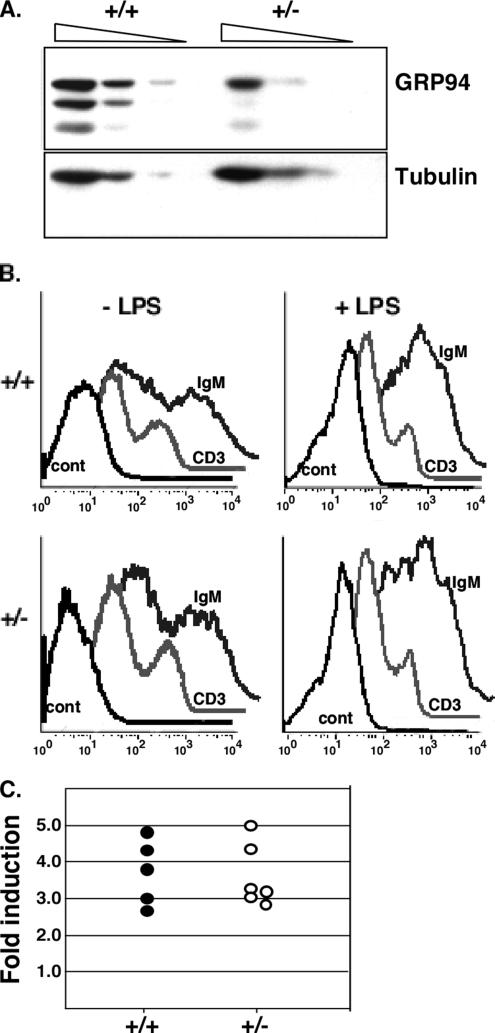Figure 4.
Heterozygous mice are normal. (A) grp94+/− mice have a 50% reduction in GRP94 protein. Liver homogenates were prepared from heterozygous and WT mice, and equal amounts of total protein were loaded in dilution series from left to right (100, 50, and 25 μg) and analyzed by immunoblotting with anti-GRP94 (9G10; top) or with anti-β tubulin (bottom). The three GRP94 bands are the full-length protein and two smaller degradation products (approx. 80 and 70 kDa) that are commonly seen in liver extracts. The blot shown is representative of four replicates. Essentially the same result was also obtained by immunoblots of spleen extracts (not shown). (B) Splenocyte differentiation. Spleen cells from WT (+/+) or heterozygous (+/−) mice were either cultured without treatment or treated with 50 μg/ml LPS to initiate proliferation of B-cells and differentiation into Ig-secreting cells. Three days later, the cultures were stained with anti-IgM antibodies to mark B-cells or with anti-CD3 antibodies to mark T-cells, as internal controls. Control traces, unstained cells. (C) Induction of Ig secretion in splenocytes. Spleen cells from heterozygous or WT mice where treated with 50 μg/ml LPS as above, and 3 d later the levels of Ig in the medium were determined by ELISA with either anti-μ or anti-κ antibodies. The ratio of Ig in the medium before and after LPS treatment was calculated for each spleen culture, normalized for cell number, and is plotted as the magnitude of the induction.

